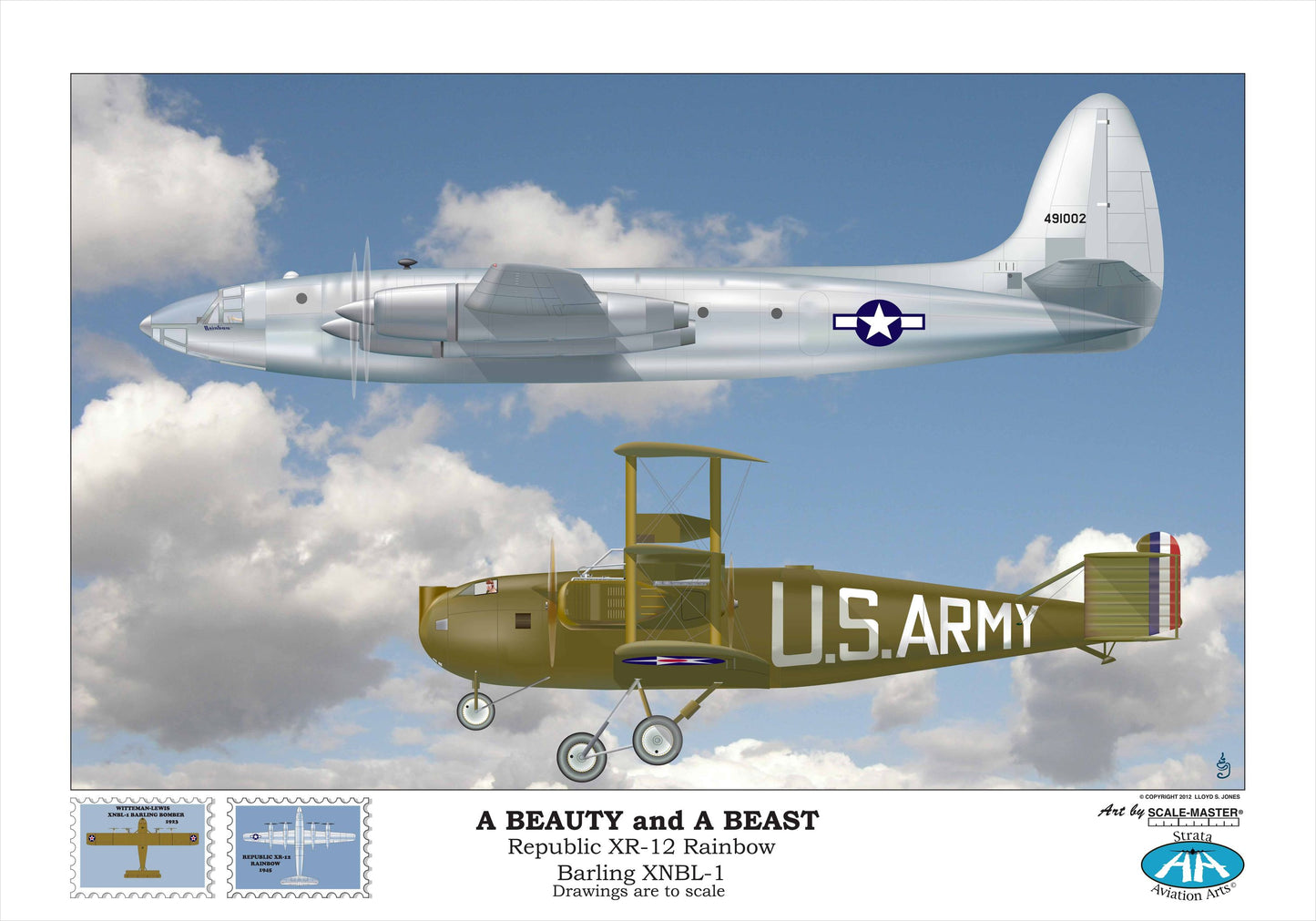Strata Aviation Arts
A Beauty and a Beast - Republic XR-12 Rainbow/Barling XNBL-1
A Beauty and a Beast - Republic XR-12 Rainbow/Barling XNBL-1
Couldn't load pickup availability
Aircraft design was slowly evolving during the 1920's. By then, the trend was toward "lots of engines and lots of wings", as the mysteries of aerodynamics began to unravel. Though the engines had reached 500 hp, it required several to get enough energy to push the aircraft through the air, and the more wings; the more the lift and speed... or so it seems.
By 1920, the U.S. Army decided to build the world's largest airplane. It was to be a long-range night bomber, the XNBL-1, known as the "Barling Bomber" after it's designer, Walter Barling.
It seemed to have all the qualifications: It was big, had three wings, six 500 hp engines and biplane tail! Plus, it was Ugly! It was the type sometimes referred to as...more likely to antagonize the air than to fly through it!
And it flew exactly like it appeared! It had a maximum speed of 95 mph and had to fly around the mountains because it couldn't climb over them.
Ultimately, it was considered such an embarrassment, it was scrapped.
In 1944, a quarter century after the appearance of the Barling Bomber, Republic presented the XF-12 Rainbow, a remarkable feat of aircraft design elegance, considered by many to be the most beautiful airplane ever designed.
It was created to be a high-speed photo reconnaissance laboratory, and hopefully an airliner after the war.
The Rainbow was slightly larger than the Barling but had four 3,000 hp engines and a speed in excess of 400 mph and could fly up to 40,000 feet.
Regrettably, an engine fire caused the loss of the first plane and a second plane was never to fly but was used as a ground target for shelling.
Share

Handcrafted Giclée Art Prints
Each giclée art print is a high-quality, limited edition piece. All images are printed on fine art, museum-quality, 100% cotton paper that is both acid-free and free of optical brightening agents (OBA). Only Canon printers and archival inks are used for printing. Each print is part of a limited edition of 250 individual copies, and a Certificate of Authenticity is included with every print.


